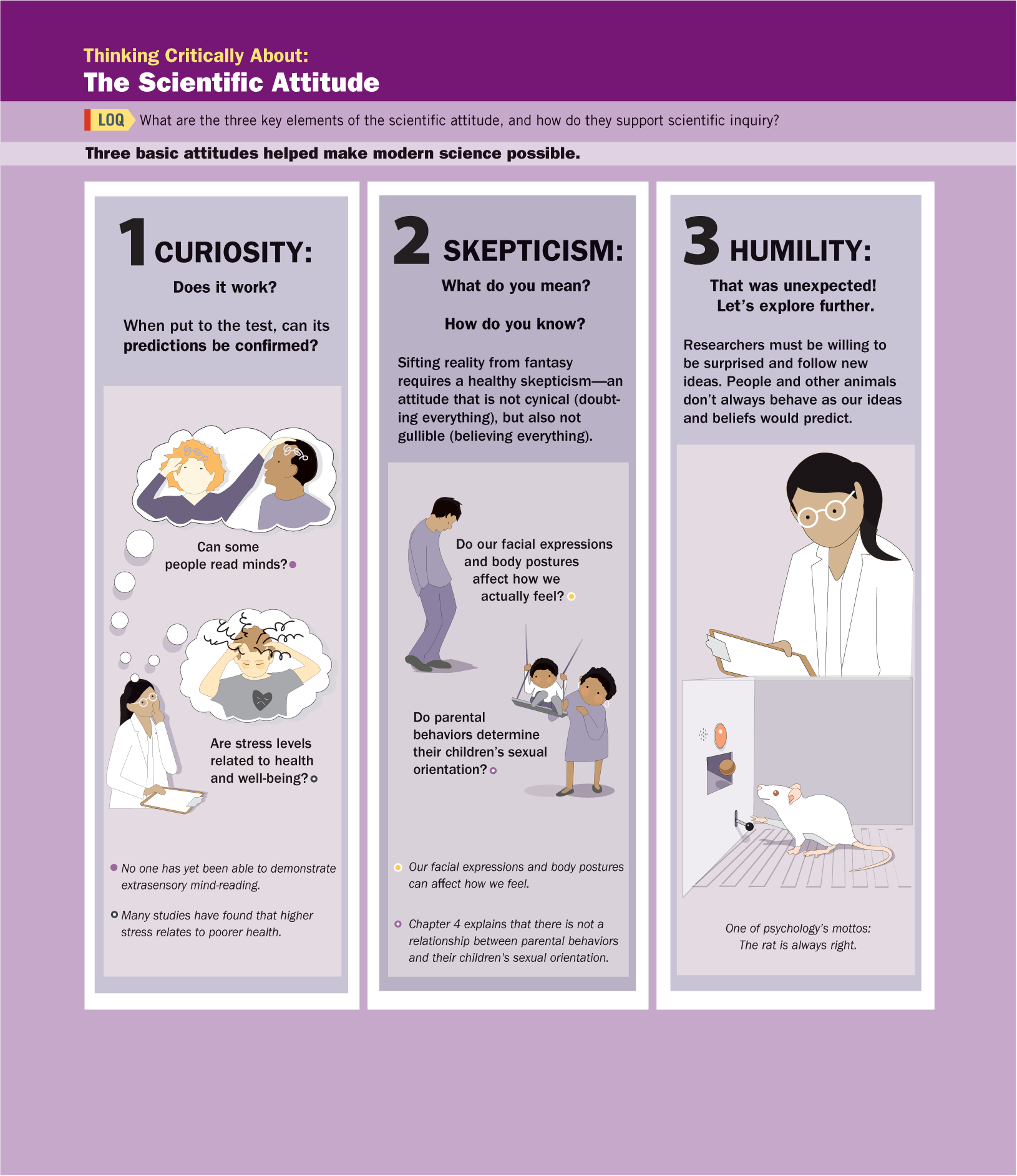Chapter 1. The Scientific Attitude
Infographic
Infographic Activity
by David Myers and Nathan DeWall
true
true
Thinking Critically About: The Scientific Attitude
The scientific attitude prepares us to think smarter. No matter how sensible-seeming or wild an idea, the smart thinker asks: Does it work? (This infographic is from Psychology in Everyday Life, 5th Edition, Chapter 1.)

Figure 1.1:
The Scientific Attitude imageEnlarge figure Image description
Quiz
Quiz
Question 1.1
TPWfu4+tEo8pYtkJ05QfrJOCH4qBU6poKw2OdJE7Zvm45WwebnX1lrBDg3+9CALB6INZ5CTq9Gbw+MEeWc6uCOAGpIYJXk+3huVJHg==Humility—including an openness to unexpected findings, and to having one’s own ideas challenged—is part of what enables scientific progress.
Question 1.2
w+IJT/bBIEDsEi4xGdv5GHYWC3aZ+CaLZLtHTq/aajoqdXDbSisEny9zPjjxCu5cStgUV4y6fNZmMWzktoo+CMUfEcFobuqgRm0pxg==Scientists seek the middle ground between cynicism (doubting everything) and gullibility (believing anything). Their healthy skepticism pushes for answers: What do you mean? How do you know?
Question 1.3
VhqJ8/xjzg4z4YVy+gOwmASTLzEYvlxnj8vpb+vU4QCJEBIr5dnHSglHPVZWLRWO1rOpa1RbRYWwBYQTPnoAfvJkEM5hRxfps9YU7YcNPEgyDdqc“The rat is always right” is a way of saying that if animals’ (or people’s) behavior doesn’t meet our expectations, then it’s our ideas that need to change.